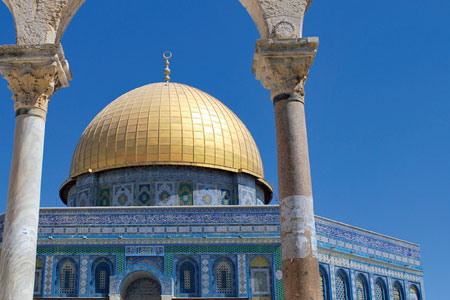
The Shape of the Holy
Issue 88 January 2012
In a new feature called Spaces, we start the year with the space used for collective prayers. Arub Saqib identifies the three distinctive parts of a mosque.
The mosque is a building of supreme importance in Islam. Throughout its history, the role of the mosque, or masjid (a place of prostration), has varied greatly, from a place of worship, to a community centre, to a university, to a political statement. Its diversity as a building model takes it to the very core of the community, proving it has been a key public space for every settled congregation and their collective activities. Like all public spaces, a mosque is the beating heart existing as an integral part of its surrounding community. A study of some key mosque models built since the early days of Islam reveal that these buildings were never meant to exist in isolation, but were very rooted in the context from which they had emerged. Key figures in contemporary architectural discourse, such as London-based architect David Adjaye, also recognise the remarkable malleability of the mosque model, appearing from the early days of Islam to be distinctly different in every country. In his essay on Making Public Buildings, Adjaye compares the context-rooted appearance of the ancient mosques found all over Africa, (so different to one another in appearance and construction material), to the standardised model of churches from the same period, which were more or less the same no matter where they were built.
The first mosque was built at the home of the Prophet Muhammad. The building has been rebuilt, extended and altered several times since, keeping it fresh and contemporary for every new community. There was nothing unusual or different about the physical appearance of the Prophet’s Mosque in comparison to its surrounding neighbourhood. It relied on local craftsmanship, skill and technique of the labourers that had banded together to build it.
The building, like all the local houses at the time, was constructed around a central internal courtyard, primarily to keep the building cool. The other two features of the house that became important as models to emulate were a sheltered area for worshippers whilst they prayed, worked or rested, and a way to indicate the qibla (direction facing Makkah).
Bookmark this |
|
Add to DIGG |
|
Add to del.icio.us |
|
Stumble this |
|
Share on Facebook |
|
Share this |
|
Send to a Friend |
|
Link to this |
|
Printer Friendly |
|
Print in plain text |
|


Comments
0 Comments